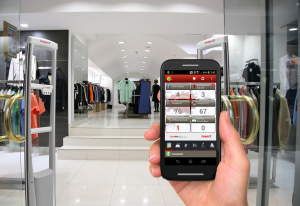For a long time now police departments across the United States have been working closely with retailers in their areas to protect their stores, the safety of customers and residents alike. The cost associated with shoplifting goes beyond the loses it causes to the retail store and consumers, and violent crimes associated with shoplifting keeps police departments busy and the crime rate increase is bad for business.
For more about shoplifting follow the links below.
Shoplifting putting the pinch on police, businesses
Shoplifting is a significant problem that costs retailers as well as consumers, and may lead to other crimes, according to Martinsville’s Police Chief.
Shoplifting accounted for a fifth of Martinsville’s total Part I crimes in 2014 – crimes that are the best indicator of the safety of citizens, including violent and property crimes, Police Chief Sean Dunn said. Shoplifting accounted for 92 of the city’s 441 total Part 1 crimes (nearly 21 percent) in 2014.
“This is a significant cost to our local retailers, which certainly translates to a higher cost for all of us. As a result of the large percentage of shoplifting incidents, we decided to tackle this from a department-wide approach and enhance our partnership with the business community,” Dunn said.
“This is a significant cost to our local retailers, which certainly translates to a higher cost for all of us. As a result of the large percentage of shoplifting incidents, we decided to tackle this from a department-wide approach and enhance our partnership with the business community,” Dunn said.
The Martinsville Police Department’s initial response included patrol officers making periodic stops at local businesses “to deter unlawful activity and to reinforce with the business community their importance to us,” Dunn said.
Observation skills, quick thinking help prevent shoplifting
About 27 million shoplifters live in the United States today, with offenders spanning generations.
According to the National Association for Shoplifting Prevention (NASP), that means 1 in 11 people have shoplifted. There is no “typical” offender.
“It could be anybody,” said Nathan Hershley, the security supervisor at East Hills Shopping Center. “I’ve personally dealt with (shoplifters) from 14 years old, clear up into their 50s.”
Shoplifters target all types of stores, according to NASP — from drug stores to supermarkets, convenience stores and even thrift shops.
Store employees and customers who shop there play an important role in helping catch anyone suspected of stealing. Staying alert for suspicious behavior and catching the suspect(s) on photo or video can help authorities make an arrest.
Experts say organized crime rings are on the rise. A September survey by the National Retail Federation showed 97 percent of retailers contacted believed they were victims of organized retail crime within the last year. Almost half reported a “significant” increase in such crimes.
Jan. 02–Supermarkets across Central Florida were puzzled after more than $50,000 worth of merchandise vanished from shelves.
It wasn’t the result of closeout deals or the green-haired Christmas villain known as the Grinch making off with cartloads of products from Publix and Winn-Dixie stores. Rather, a posse of Central Floridians pilfered pricey grocery stock such as Crest White Strips and Gillette razors from almost 100 stores.
Security camera footage eventually revealed the coordinated thievery, which led to the arrests of five suspects. The organized shoplifting ring busted in August is part of a growing trend that has stores on their toes, especially with the increases of retail theft around the holiday season.

 Using Facebook, their own websites and other social media outlets, many retailers have for years posted
Using Facebook, their own websites and other social media outlets, many retailers have for years posted
 With January the last month fiscal month for plenty of retailers, we can all look forward to *drum roll* INVENTORIES!! Wait, am I the only one excited to count millions of pieces of merchandise in a single night? I’ve always been the odd-ball in my department I guess. Inventory is a great way to start a new fiscal year off. Clean inventory counts, accurate pricing and getting back in stock is the key to making sales in the 1
With January the last month fiscal month for plenty of retailers, we can all look forward to *drum roll* INVENTORIES!! Wait, am I the only one excited to count millions of pieces of merchandise in a single night? I’ve always been the odd-ball in my department I guess. Inventory is a great way to start a new fiscal year off. Clean inventory counts, accurate pricing and getting back in stock is the key to making sales in the 1 I’m seeing a huge spike in return fraud, so I’m betting you are too. For my particular stores, it is a huge problem. I will venture to say that it is the biggest and most financially impactful fraud scheme that is affecting my stores; and it’s only getting bigger. I’m fortunate enough to have a small team within our LP department that do nothing but review returns data. When they see something that is indicative of fraud, we actually cancel the store credits unless proof of purchase can be verified. We are poised to break 5 million dollars in suspended store credits this year. Insane.
I’m seeing a huge spike in return fraud, so I’m betting you are too. For my particular stores, it is a huge problem. I will venture to say that it is the biggest and most financially impactful fraud scheme that is affecting my stores; and it’s only getting bigger. I’m fortunate enough to have a small team within our LP department that do nothing but review returns data. When they see something that is indicative of fraud, we actually cancel the store credits unless proof of purchase can be verified. We are poised to break 5 million dollars in suspended store credits this year. Insane. The holidays are over and all over the country retail personnel are saying, “I can’t do that again. I’ve got to get out of retail.” Some of them are, understandably, experiencing a momentary stress or anxiety reaction. After they’ve had some time to de-stress they’ll bounce back and want to stay in the field.
The holidays are over and all over the country retail personnel are saying, “I can’t do that again. I’ve got to get out of retail.” Some of them are, understandably, experiencing a momentary stress or anxiety reaction. After they’ve had some time to de-stress they’ll bounce back and want to stay in the field.


